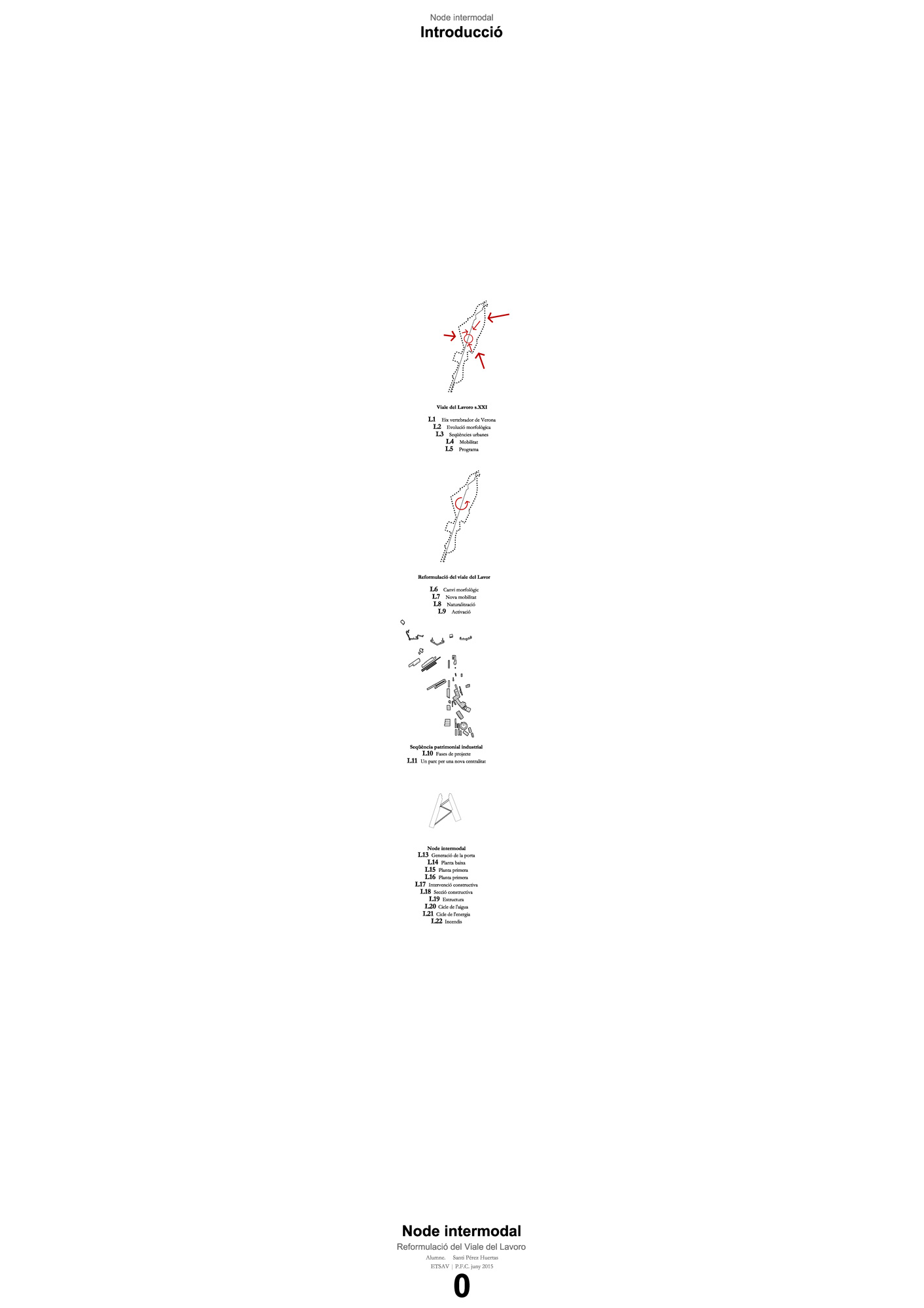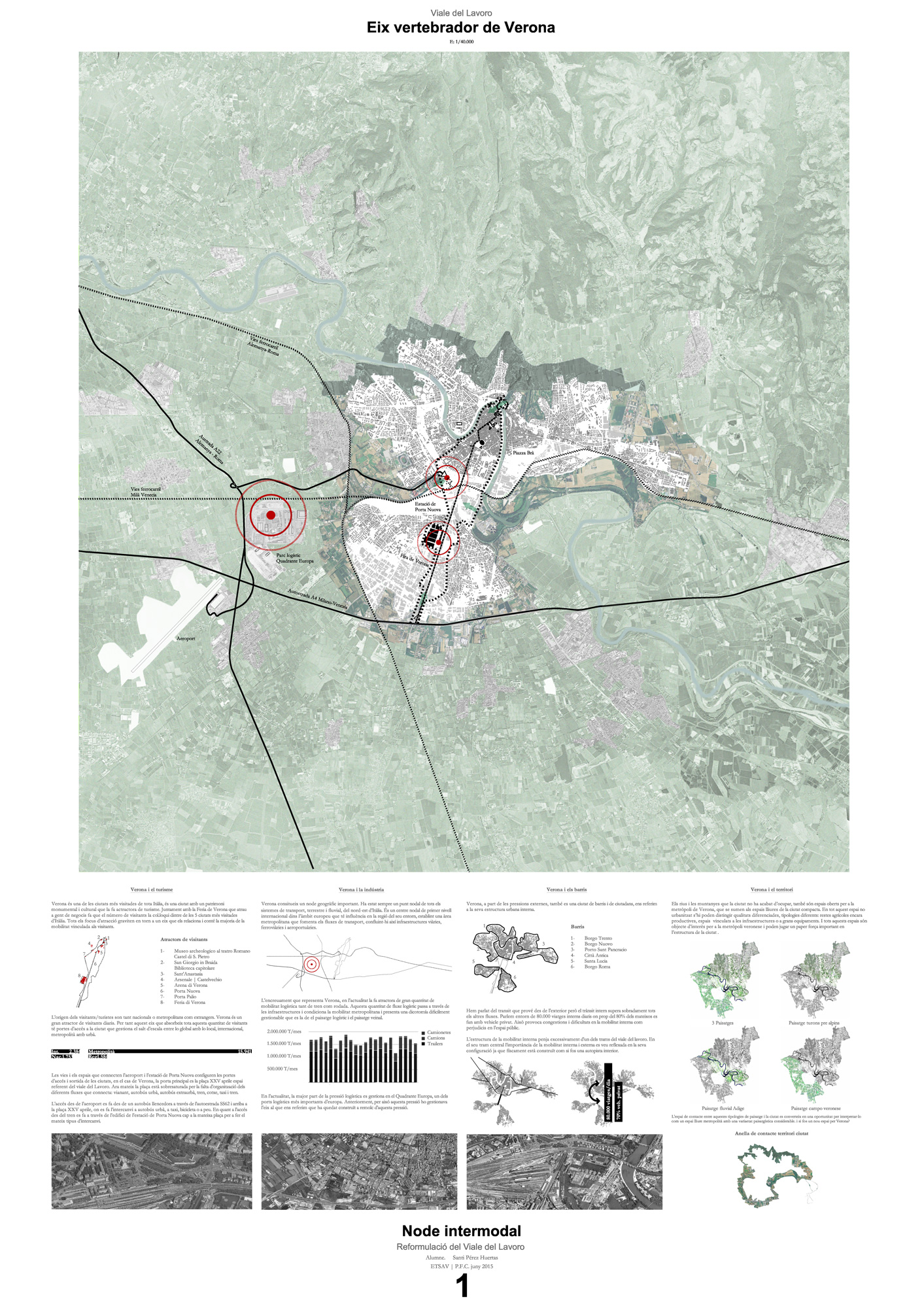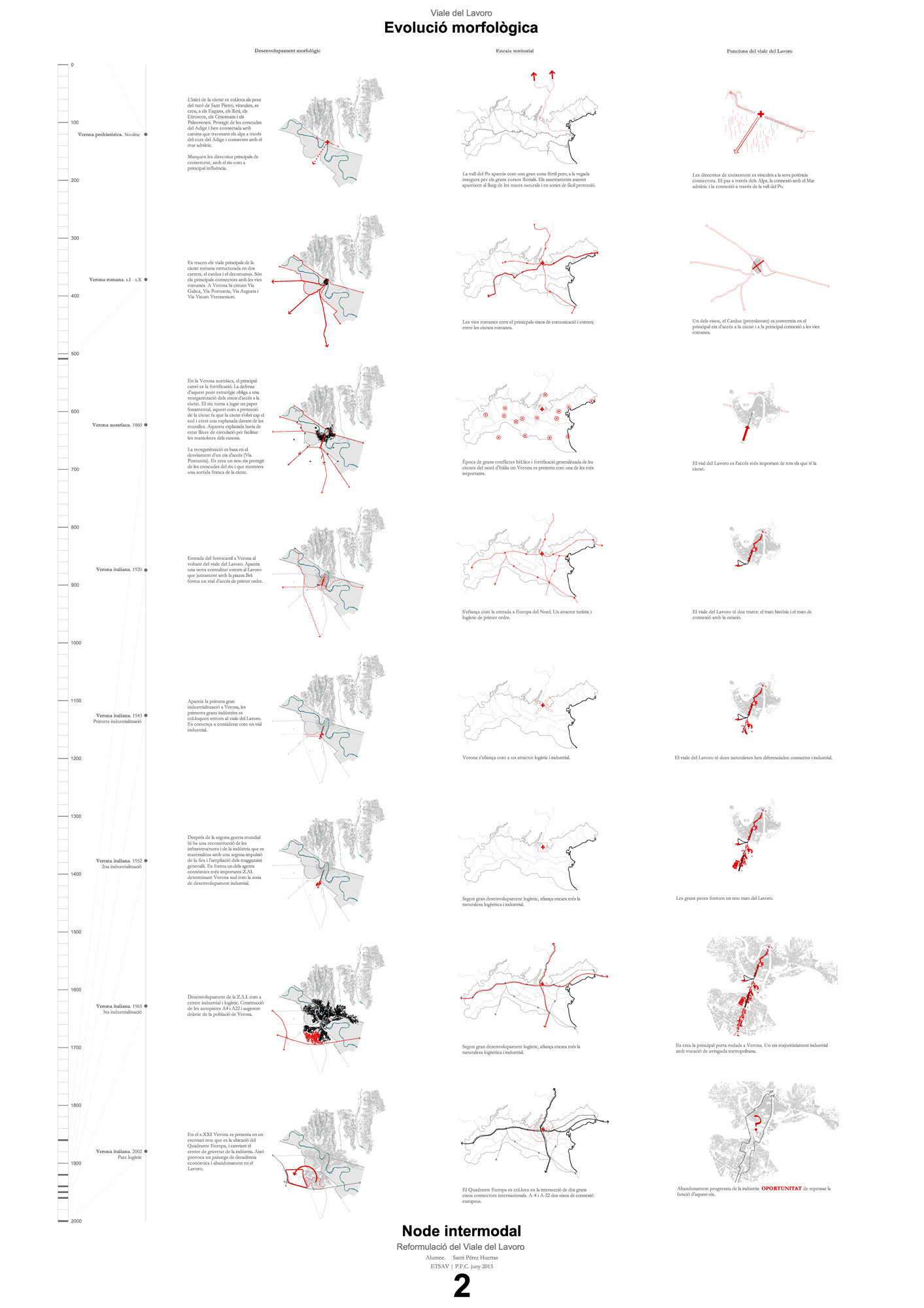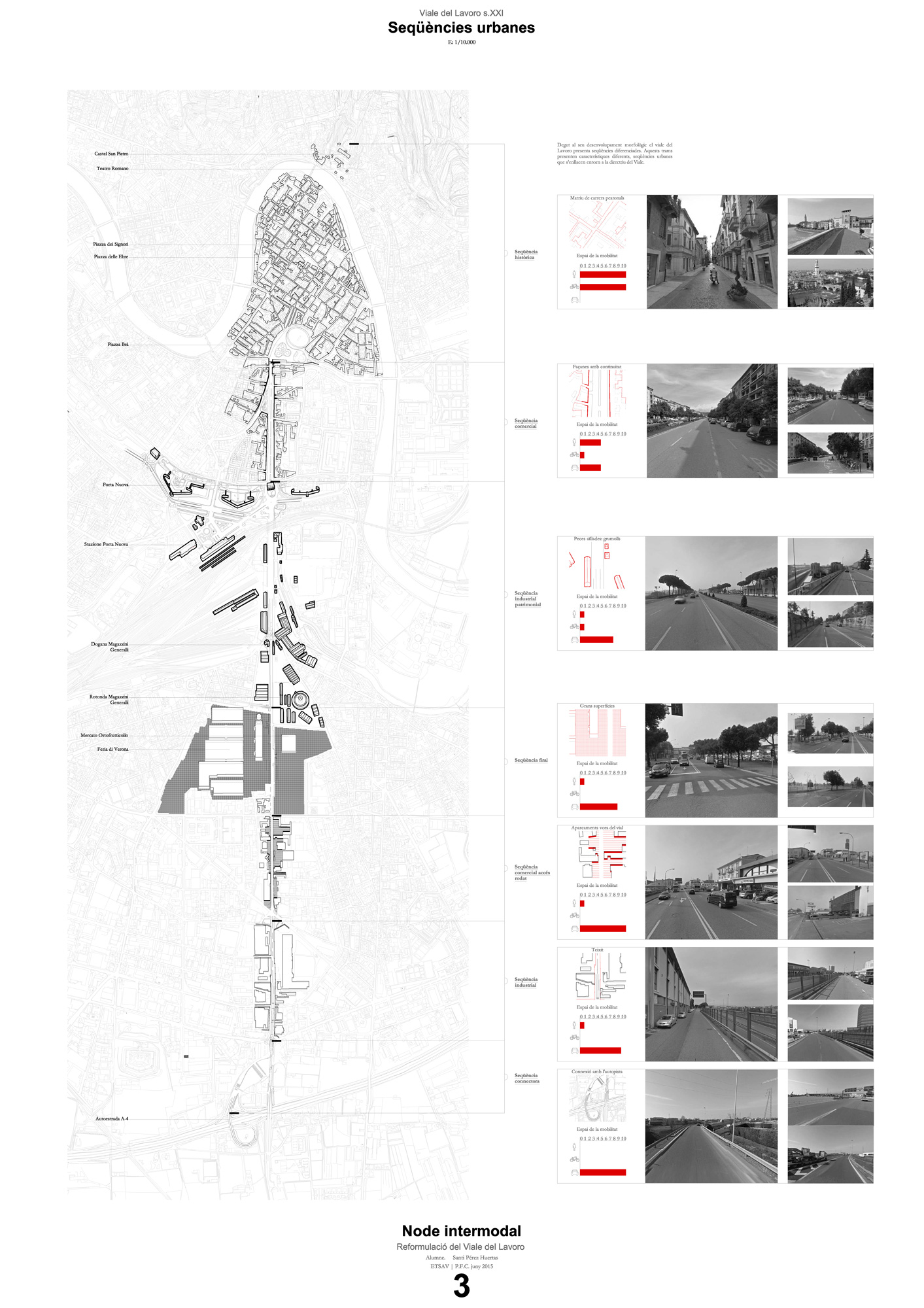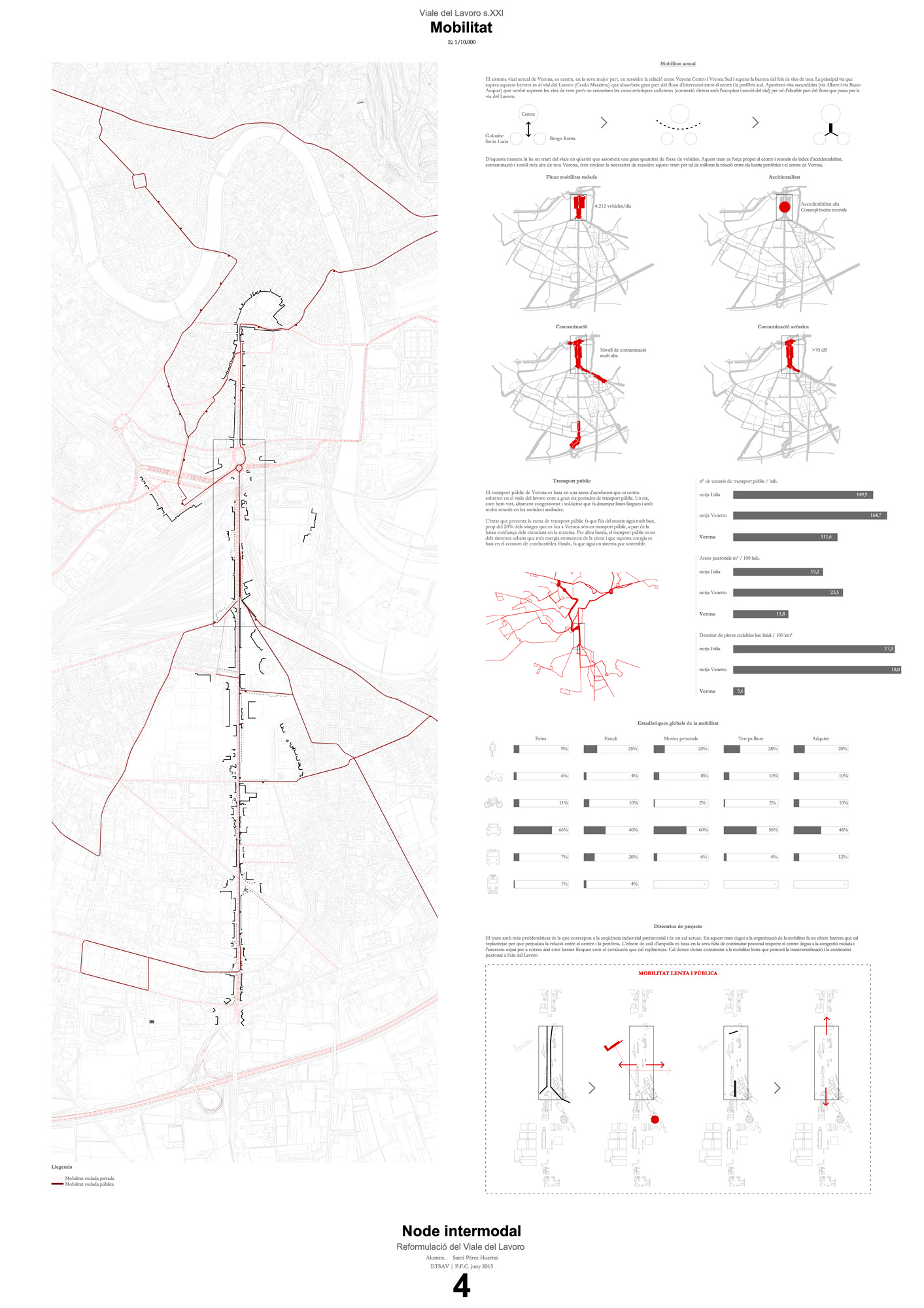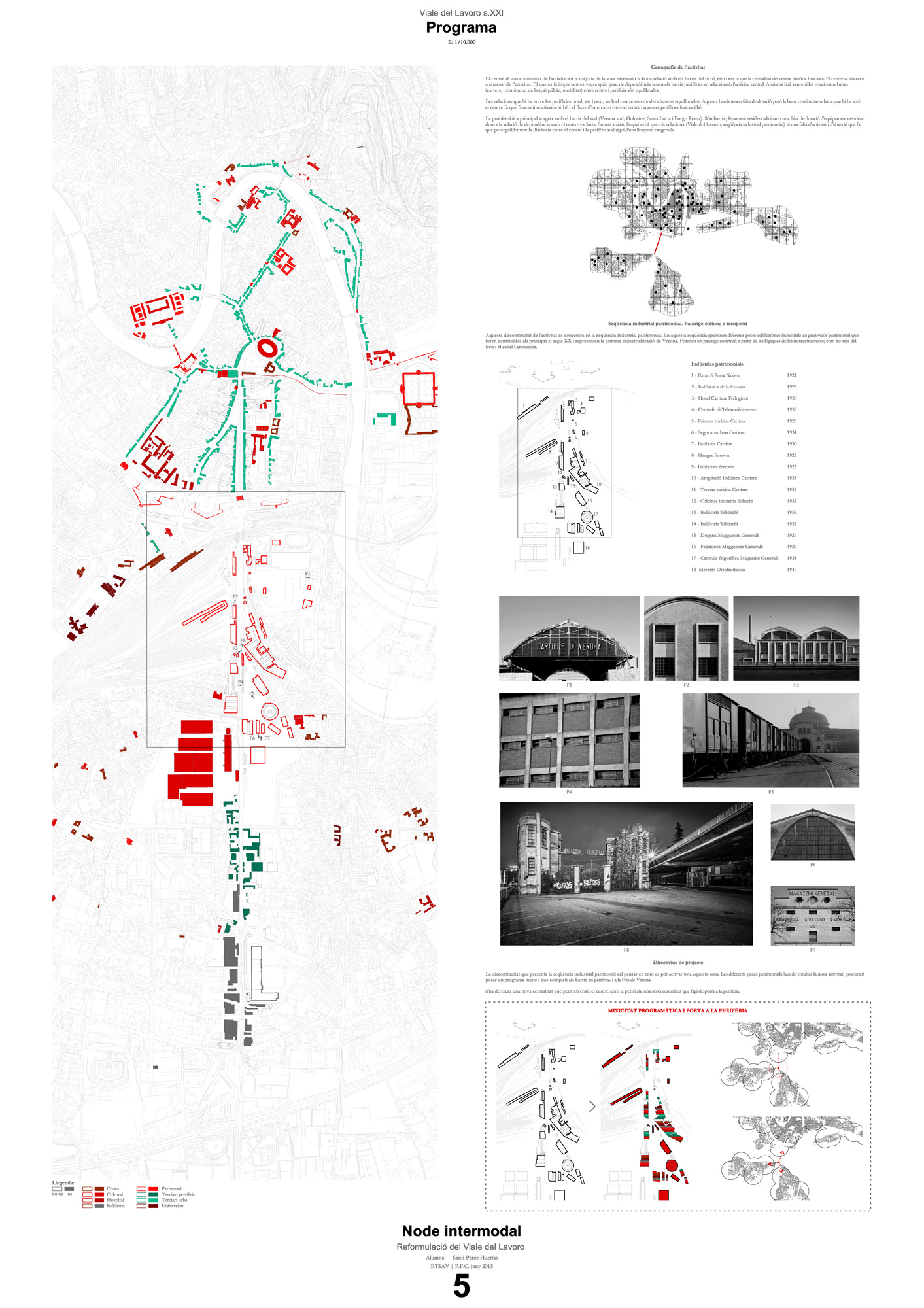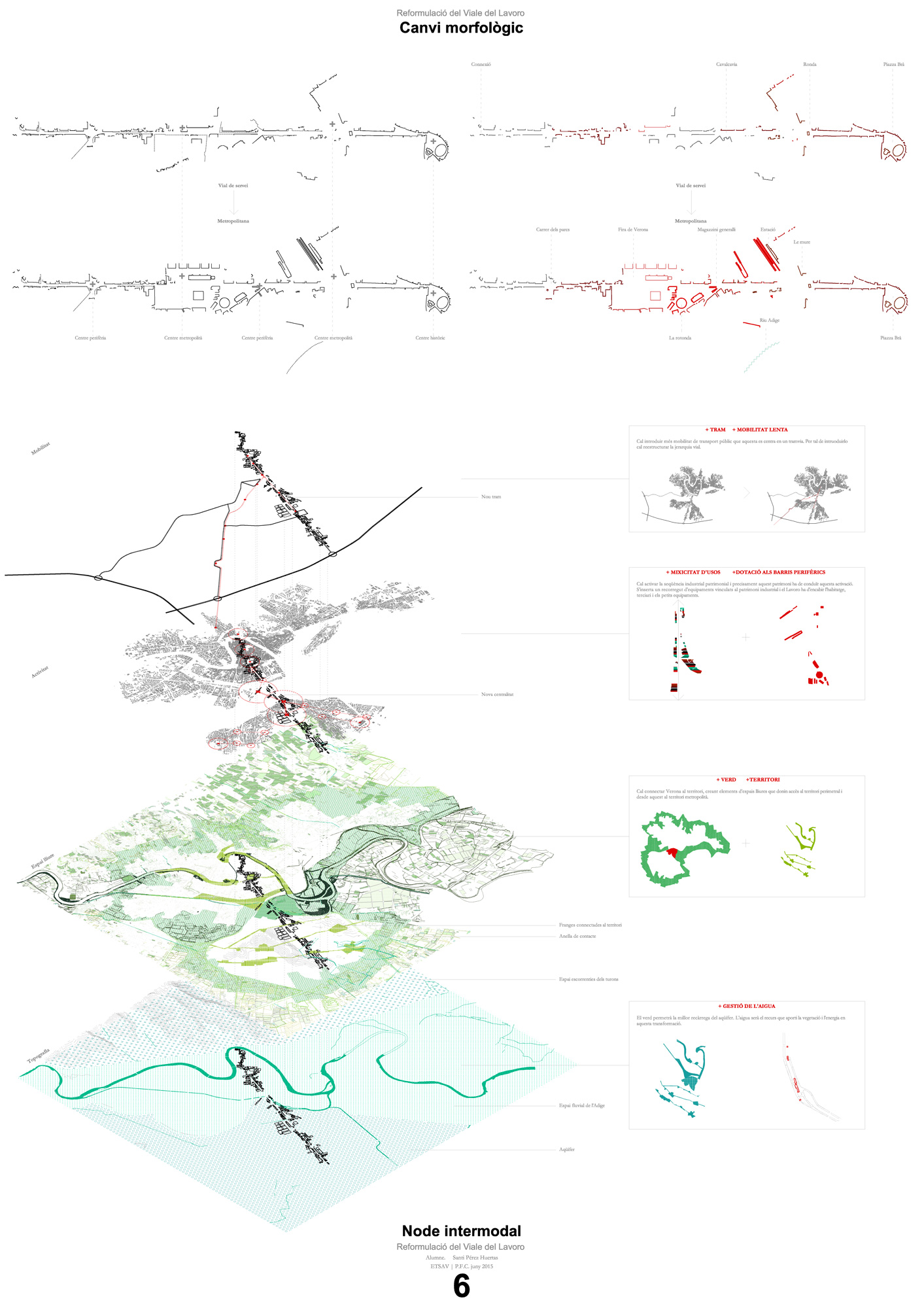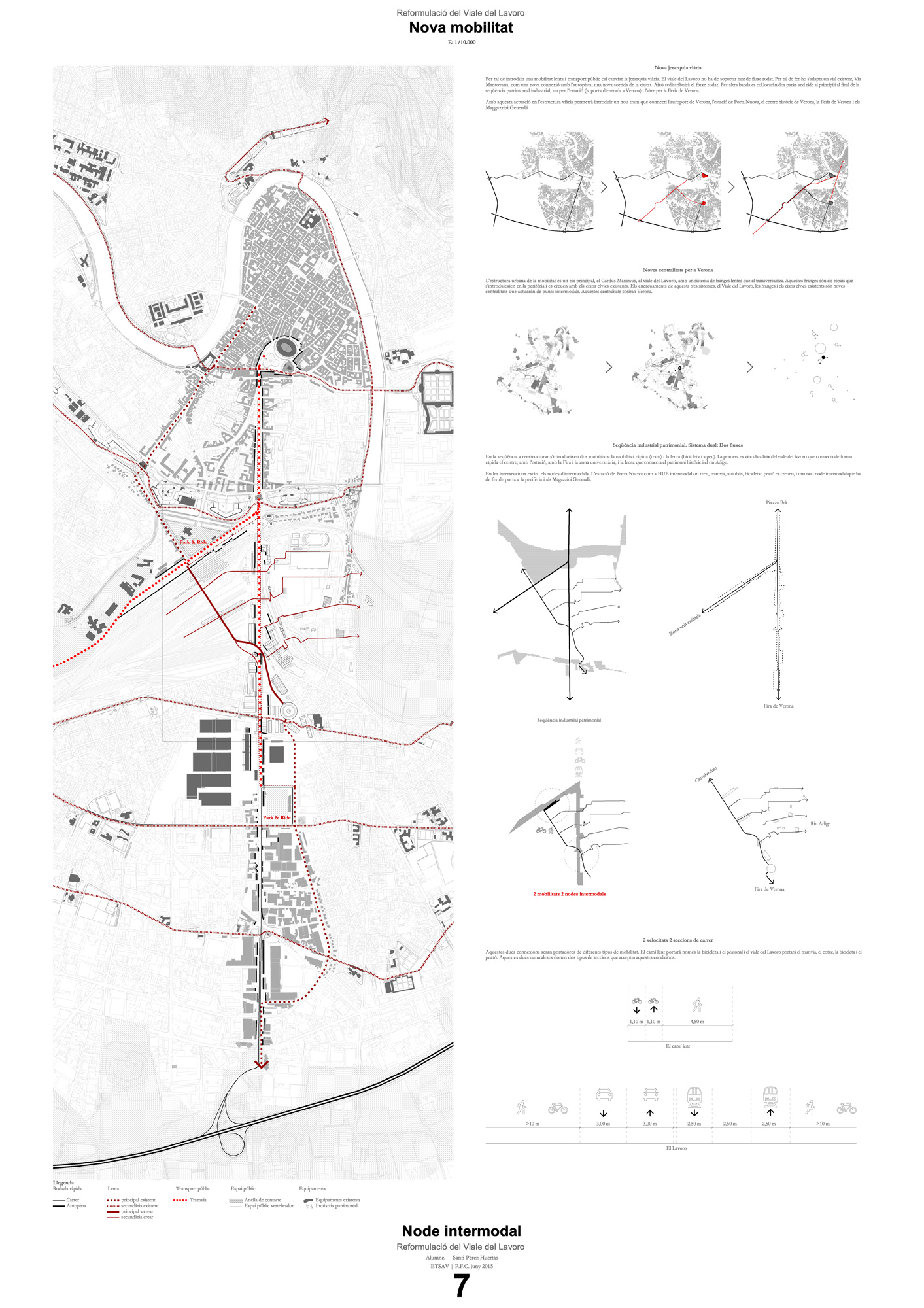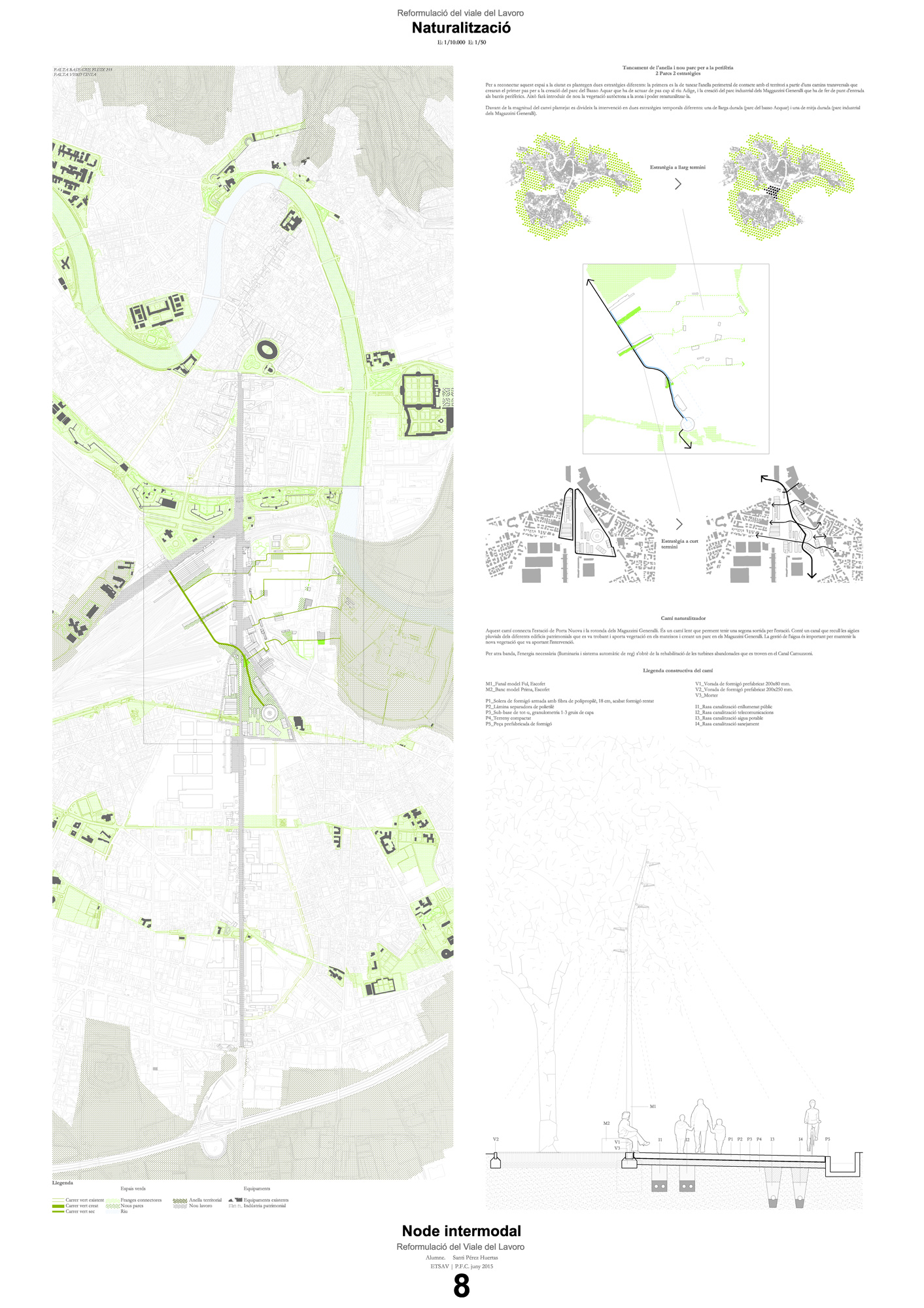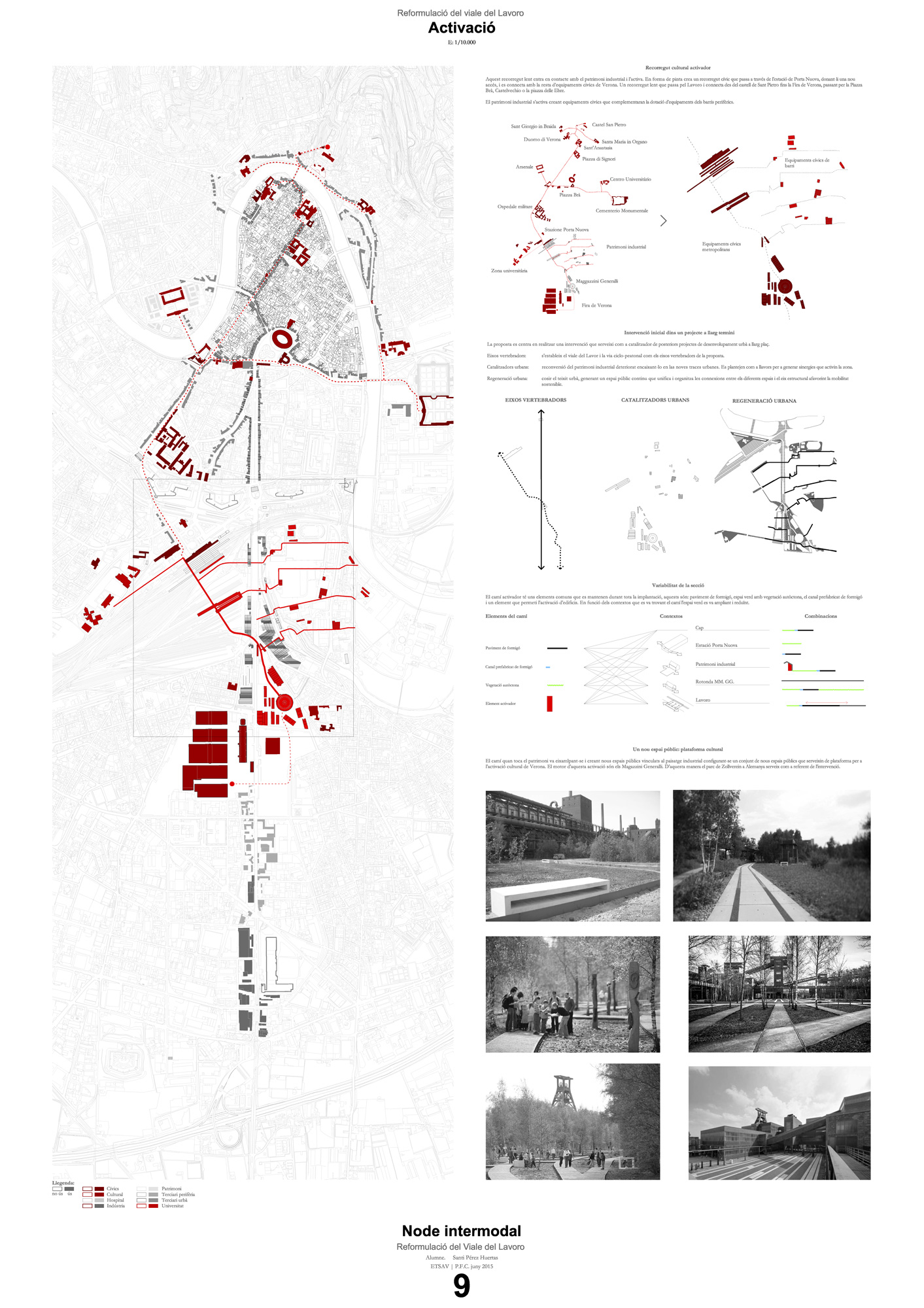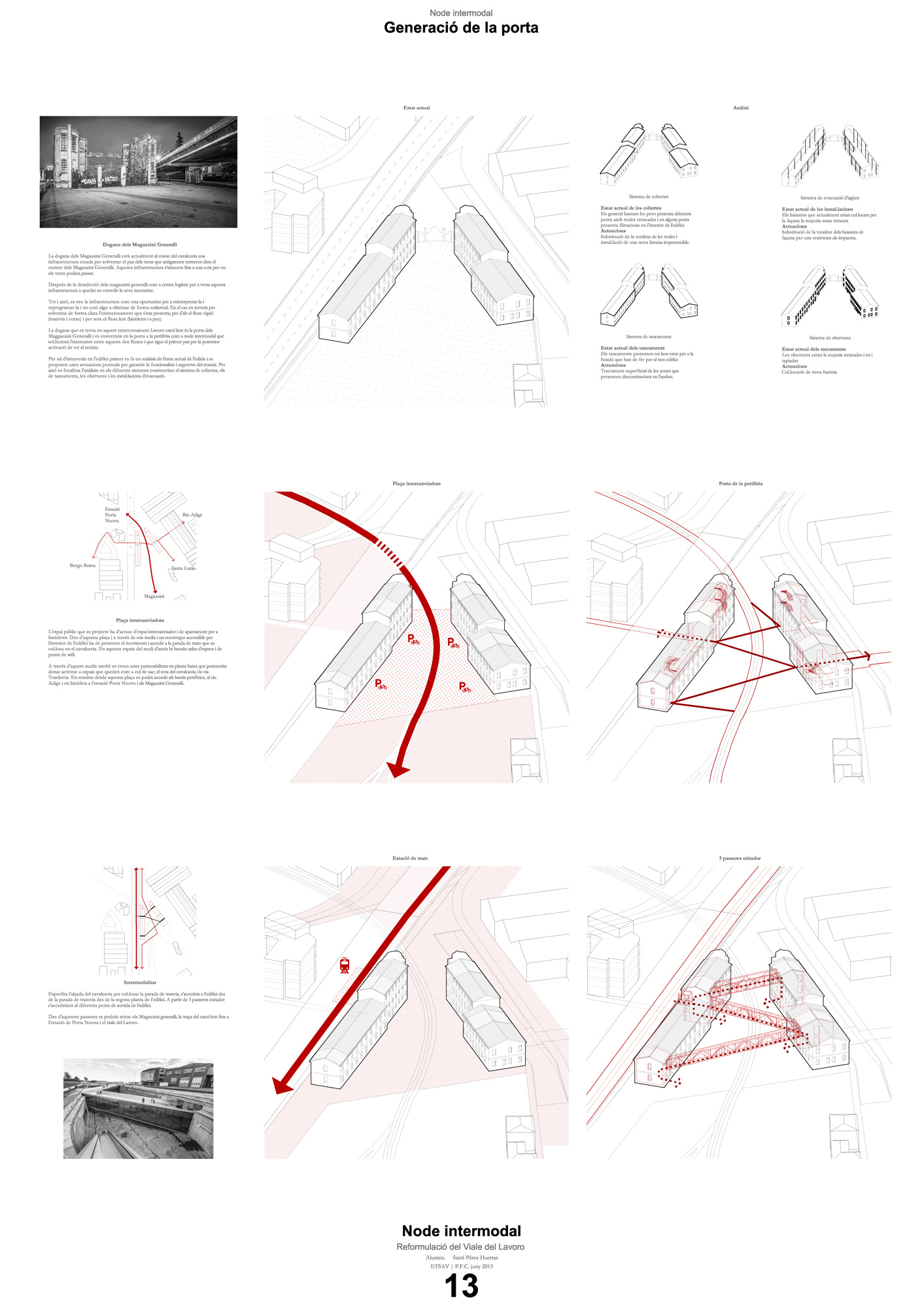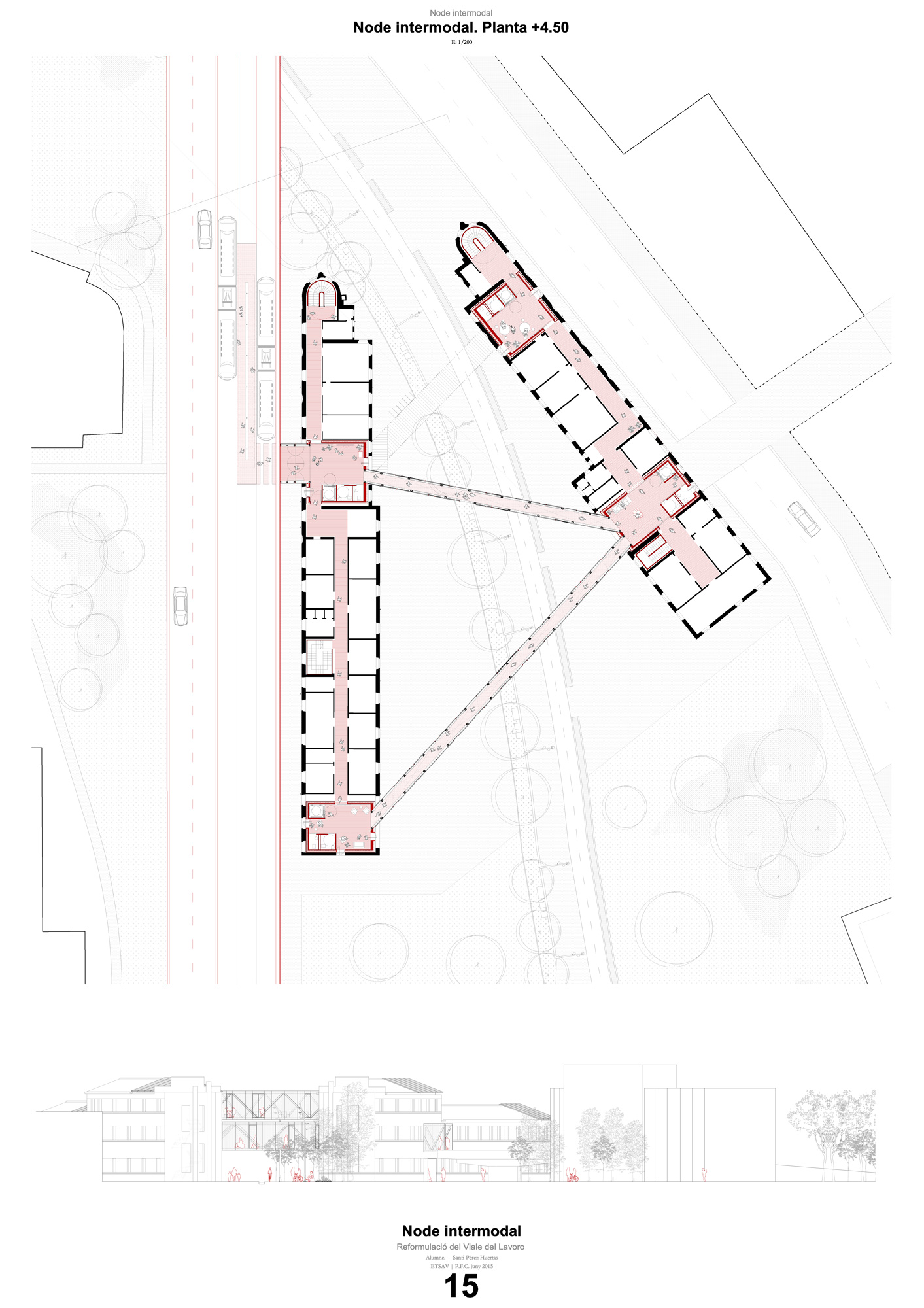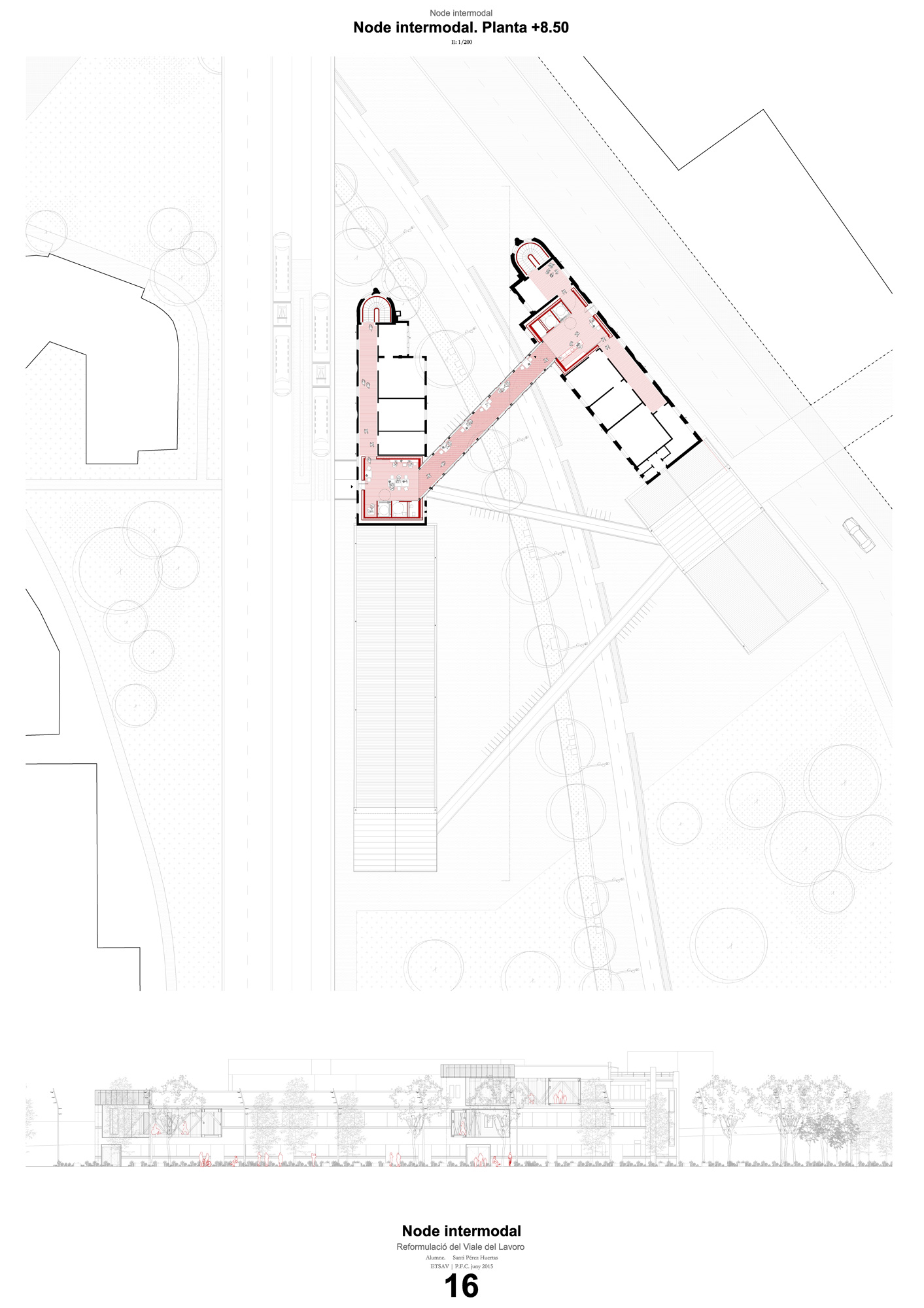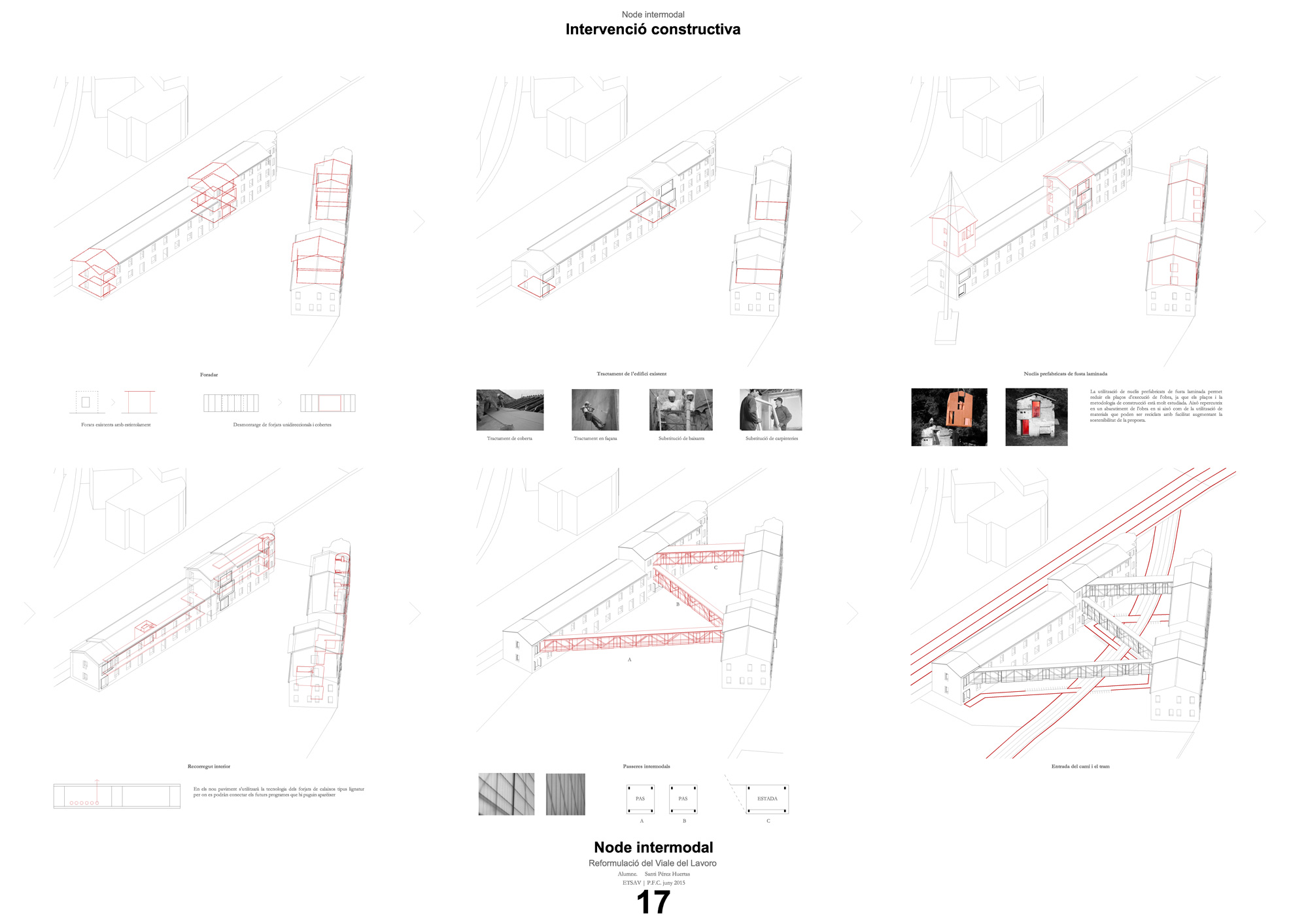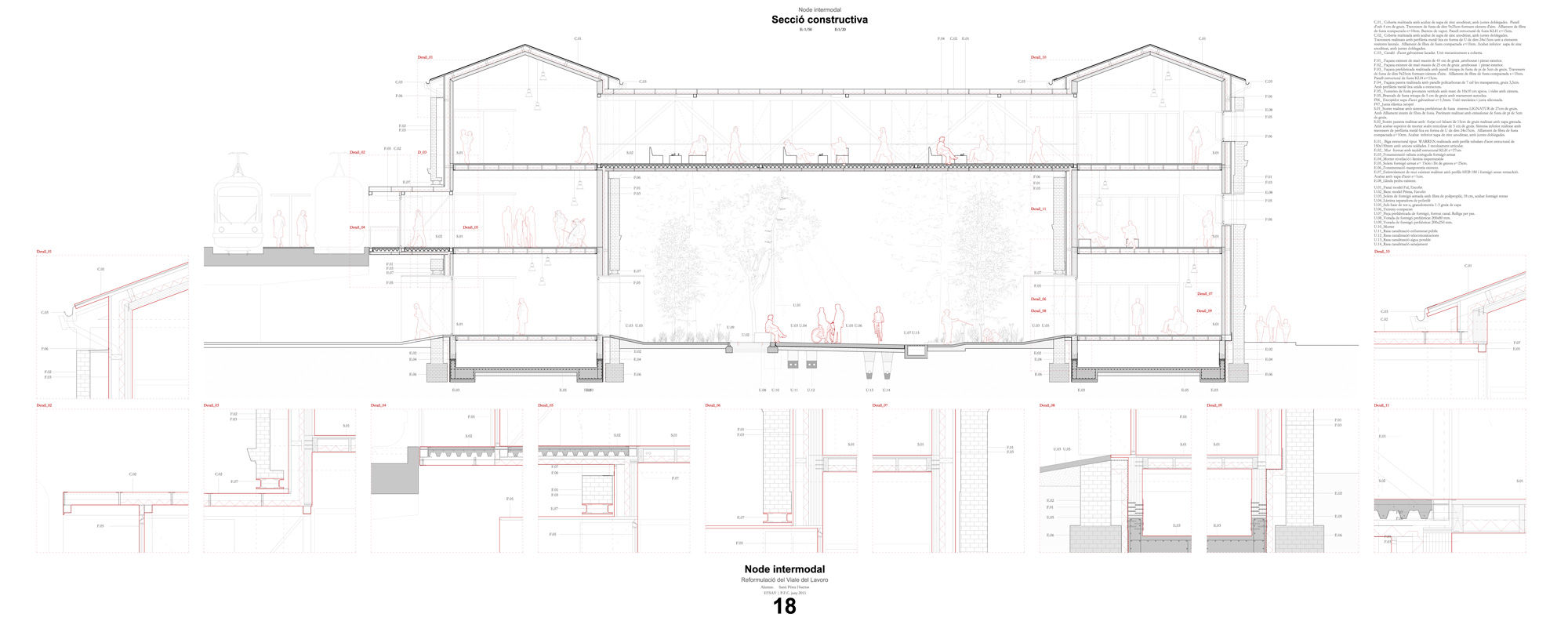1340-SPH-IT-2015
Client: ETSA Barcelona
Status: Academic
Location: Verona, Italy
Coordinates: 45.4210163, 10.9876662
Climate: Humid subtropical, Temperate
Materials: Metal, Wood
Environment: Urban
Visualizer: Studio
Scale: Extralarge
Types: Masterplan, Public space, Refurbishment
Verona is a city divided in two: center and periphery, divided by the railroad routes and by Basso Acquar. The only axis between these two entities is viale del Lavoro. This axis is the one that agglutinates the main urban centralities, it is the space that manages the mobility flow in-out of the city.It is a space that he has been answering to the different historical situations answering with different functions. These have been formalizing in different urban sequences. It presents different problems: activity discontinuity and tunnel effect. They collaborates in the border effect.
Reformulation of viale Del Lavoro
This discontinuity coincides with an urban sequence with a single character. This character is formed by hereditary industrial architecture.3 strategies: a new mobility, a new structure of public space and a new activity. This 3 strategies creates different mechanisms that they affect to different scales of the city. These mechanisms are coordinated from a project by phases that allows, ultimately, the reinstatement and the rescheduling of this urban space.
Industrial hereditary sequence
The activation of the hereditary industrial sequence begins from the creation of a new urban park (Magazzini Generali) and the construction of an intermodal node that acts as a door of the periphery. When this architectural mechanism appears the new urban programs will be able to invade the abandoned buildings (hereditary industrial architecture).
Intermodal Node
A new door for the periphery, a new public space and a new tramway station that connects the center with the periphery. The station is inserted in Dogana, Magazzini Generalli, The Dogana was the ancient entrance of the enclosure. This station must manage two different flows of mobility. The slow one, on foot and in bicycle, and rapid other one, in tramway. These two flows of mobility formalize in two architectural elements: a heavy structure for the exchange of the tramway and a public space for the slow one.The node is the catalyst of the process.
